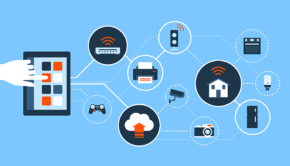Enhancing Network Security with Automation
It’s just as critical to secure the network as it is to secure the servers and apps. Automation is a critical component for ensuring network safety and security.
In this article, we will discuss enhancing network security with automation and will also provide you with the cost-efficient DNS DHCP appliance.
Why enhance network security?
You can only manage devices on the network that you are aware of. Although some companies have procedures in place to add or remove devices from the network inventory, these procedures do not guarantee that all devices are discovered and registered. The existence of a workplace process, for example, does not rule out the potential that a device was connected to the network without following the process or without the knowledge of the network administrators.
An automated network discovery mechanism eliminates these risks and ensures a consistent network inventory. To provide comprehensive coverage, several approaches and data sources must be used.
A good discovery process will combine data from all sources to create a comprehensive network inventory.
When a device is detected, the network discovery system should figure out what kind of hardware it is and what software it runs. Some devices may need to be identified by fingerprinting the network properties of the program, while others will have network management interfaces that make identification easier. The foundation of network security is then a full network inventory.
Automate vulnerability checking processes
You can now determine the attack surface that needs to be defended using the network inventory. This task is made easier by automation: By comparing the hardware and software combinations to PSIRT (product security incident response team) and CVE (common vulnerabilities and exposures) bulletins, you can see if any of them have known vulnerabilities.
Vulnerability checks must be performed frequently, typically daily, to detect vulnerabilities that must be addressed before a bad actor exploits them. Check containers (Kubernetes and Docker), as well as any apps operating on network equipment or in SmartNICs on servers. This method should produce two outputs: a report for IT employees and a table that may be used by a software/firmware upgrading mechanism that is automated.
When you’ve identified susceptible devices, you’ll want to automate software upgrades. Start by testing the upgrade in the lab to avoid breaking your network. This implies you’ll need a lab that closely resembles the production network so that the tests are valid.
After the software upgrade has been tested in the lab, it should be rolled out to a subset of production devices and verified. After that, you should think about rolling out the upgrade to the remainder of the network. As you acquire confidence that the upgrade will not break anything, it seems reasonable to execute it in increasingly larger pieces. Using this crawl, walk, run technique, you can limit the scope of a failed update, which is also known as limiting the change’s blast radius.
Cover Image by Freepik















